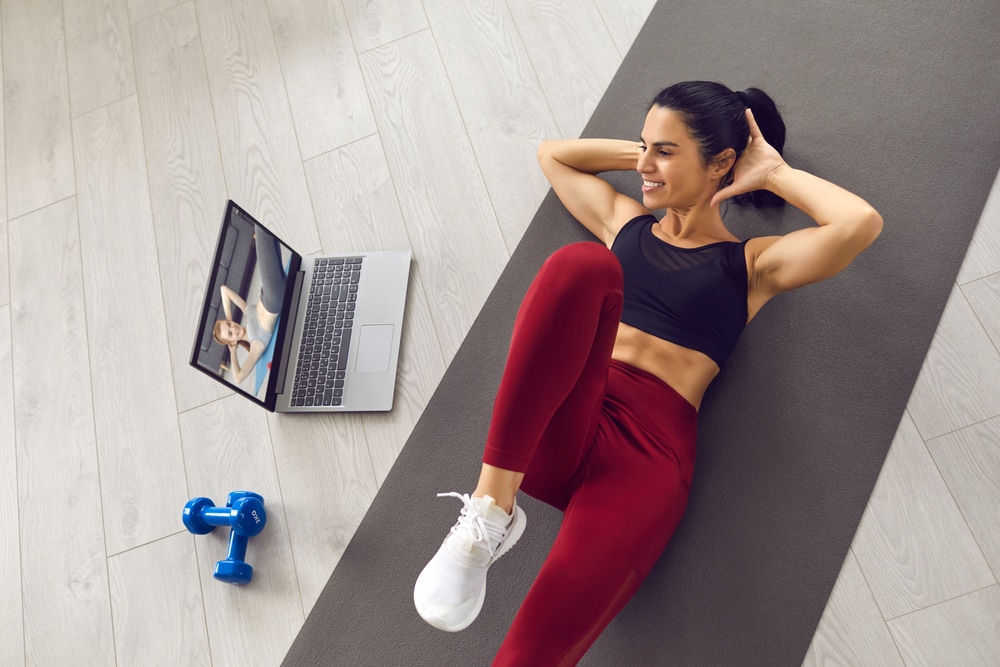Mountain biking means going up and down steep inclines, and the former can leave you physically exhausted if you’re not used to pedaling uphill. Climbing can be an exact science for serious mountain bikers. Your position on the bike can affect your speed and how you use your leg muscles during the ascent. Sitting makes you more aerodynamic and standing gives you more leverage over the bike for more powerful pedaling. Professional cyclists will usually prefer one or the other when climbing, but some will mix up their position based on the incline.
Regardless of which position you choose, wear the proper mountain biking gear to stay safe on the trail.
Find out when to stand and when to sit while mountain bike climbing.
When to Sit
Sitting is the natural position for a mountain biker. Research shows that cyclists should remain seated until the incline reaches 10 percent. However, remaining seated can lead to less power but this will help conserve oxygen so you don’t get short of breath during a long climb. Sitting during shallow gradients of four percent or less requires 10 percent less oxygen than standing because you aren’t using as many of your muscles.
When you are seated, your body’s center of gravity is supported by the saddle, which helps you conserve energy. Conserving your strength is especially important if you are low on calories or have already been biking for several hours.
When to Stand
Switching to a standing position in 10 percent gradients or more will help you increase your power when the road gets steep — even if it means consuming more oxygen. Standing works your body harder, which can lead to fatigue, but it will give you a boost in high-gradient areas.

Lots of cyclists will only stand during steep sections, usually on gradients with 10 percent or more, because it can be so hard on the body. Standing for long periods can also lead to fatigue, which is why it’s often done in short bursts or one-minute increments.
Some will also switch to a standing position when they are trying to pass someone on the ascent. This can be a great way to boost your final ranking at the end of a long race.
Standing also gives you more leverage over the handlebars. The wider your handlebars, the more leverage you will have. More of your body weight will go towards pushing the pedals down, giving you a much-needed boost when climbing. But you will need to spend more energy keeping your body balanced and upright without the added support of your bike seat.
This position can also give you more control over the direction and speed of the bike, which can come in handy during technical sections or those that require advanced maneuvering.
Where does this extra power come from? Standing alters the angles on your body, which can unlock more of your muscle power.
When you’re seated, your hips are in a closed position at 40 degrees, which reduces power output. Standing increases the angle to 70 degrees at the hips and 75 degrees at the knees. The ankles also go from 25 degrees to 40 degrees in a standing position.
This is similar to a running position, helping you get every last pump out of your calves, glutes and hamstrings, quadriceps and abductors.
Additional Considerations
These tips can help you decide where to put your body in relation to the bike, but the rules vary based on several factors.
It’s all about finding the right balance between power and energy. You don’t want to consume too much of your stamina for a short-term boost if you still have a long way to go.

Talk to your fellow riders to see which position you should be in based on the nature of the climb. Use a bike helmet with Bluetooth to keep the conversation going hands-free. You can share tips with each other as you figure out the best position for the situation.
Experts say the decision whether to sit or stand depends on your body type. If you are a larger person, standing can be a waste of your energy. You will likely see better results in the seated position because your body won’t have to work as hard to support itself. However, if you are average height, standing won’t be as physically exhausting.
A person’s nationality can inform their preference as well. Certain countries are known to prefer the standing/sitting position during steep climbs, but this might be because the area is known for producing certain body types.
When it comes to training for a big race or building up your strength, repetition is key. If you practice climbing in the saddle, you will see bigger gains in the seated position.
Your speed can be a factor as well. The number of rotations per minute will drop in steep areas. Standing can be helpful at lower speeds, but you don’t want to go too slow or you will lose momentum and start to roll back down the mountain.





